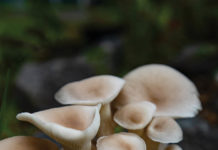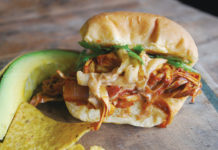Story by Shannon Wianecki

Deep in the Hawaiian rainforest, a woody vine climbs into the canopy. It winds around tree trunks, sends aerial roots reaching out for something to grab, and unfurls a mop of long leaves crowned by a bright orange inflorescence. In days past, the ‘alalā, or Hawaiian crow, fed on its red berries. Today the bird and vine are both rare.
Hawaiians call the vine ‘ie‘ie. It looks a lot like hala, the pandanus tree found throughout Polynesia. Hala is the most important species for traditional Polynesian weavers, who use its pliant leaves to make everything from mats and hats to bedding and canoe sails. ‘Ie‘ie is less common, but also significant; fiber artists in Hawai‘i use its aerial roots to fashion sturdy baskets, fish traps, war helmets, and ki‘i—fearsome representations of Hawaiian gods.

Like many indigenous art forms, Hawaiian weaving and basketry almost disappeared under the weight of Western colonization. Sacred objects like the ki‘i were destroyed or carried off to museums. Few people today know how to weave ‘ie‘ie roots. Kumulā‘au and Haunani Sing are bent on changing that. Partners in life and in craft, the two artists are fostering a new generation of Hawaiian basket makers. The Sings teach the traditional way: one-on-one, in small cohorts called papa. Beginning basketry students work with rattan, a nonnative substitute for ‘ie‘ie. As their practice matures, they learn how to harvest and care for the indigenous vine—ensuring the survival of the species and the art form.
You can admire their creations during a special basketry exhibit: Nā Akua Ākea Project runs now through December 2019 at Hale Hō‘ike‘ike at the Bailey House in Wailuku. The featured mahiole (feathered helmets) and hina‘i ‘ōpae (freshwater shrimp traps) are as beautiful as they are functional. To watch weavers in action, swing by Kā‘anapali Beach Hotel during the Kauluhiwaolele Maui Fiber Arts Conference, September 4 through 7. (Details at KBHMaui.com/hawaii-culture/weaving.)


















